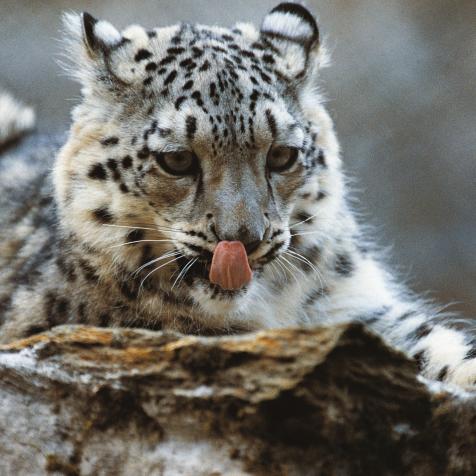
AFP
Meet the Honey-sucking, Termite-loving Tiniest Bear in the World
If any bear needs attention, it is the endangered Malayan sun bear, as science still knows very little about the species.
As the smell of ripening papaya wafts across the agroforests of Sumatra, it draws out of the thickets a small, sleek, long-clawed animal indigenous to this region - the semi-mystical sun bear. Officially named, Helarctos malayanus, these bears follow the aromas of the figs in the orchard, the jackfruit from the garden, and the cinnamon from the coffee cups in a trance.
“Sometimes my team has been on their lunch break,” says Dr. Wai-Ming Wong, who is a member of the Bear Specialist Group, “and the bears have emerged from the woods and just drifted passed them nonchalantly. Funnily, we noticed that they mostly only enter human constructions for basic necessities like oil, rice, and sugar that they seem to love.” Their 18-inch long tongue helps them get to the bottom of the sugar jar or straight up into a beehive for their other favorite sweet and stereotypical meal - honey.
Southeast Asia’s Malayan Sun Bear
See MoreMeet the Malayan Sun Bear 5 Photos
If any bear needs attention, it is the endangered Malayan sun bear, as science still knows very little about the species.
Dr. Wong now works for the non-profit Panthera, where he looks at small cat conservation - which he says often overlaps with bears - but his involvement with sun bear began ‘serendipitously’. His background was in the epidemiology of amphibians, but while applying to a PhD program, he realized that spending the next half decade looking just at frogs wasn’t exciting him. He changed his focus towards the more charming subject of the termite-loving bear of southeast Asia. He spent two years in the field in Sumatra studying the tiniest of all bear species - the Malayan sun bear, characterized by a yellowish crest under its neck - and gathered data about this beady-eyed bear by talking to 120 farmers in west-central region of the island who came in regular contact with them.
“If any bear needs attention, it is this endangered one, as science still knows very little about the species,” he says. “We know that they play a critical role in the ecosystem - like seed dispersal through their poop, pest control by their love for termites, and ecosystem engineering with their sharp claws - but there is still a lot of scope for study to inform conservation action. Especially in Southeast Asia, which is home to these bears, where rates of deforestation are the highest in the world - as forests are replaced by plantations of largely palm oil.”
His study revealed that 45.8 % of farmers interviewed were affected by conflict and that crop damage and livestock depredation “positively correlated with rainfall and peaked when important cash crops reached maturity.” Several said they would like the bears removed, but Dr. Wong said that farmers still seemed surprisingly tolerant of the animals. However, as habitat is shrinking and bears are raiding crops, retaliation is likely to rise and especially among farmers who have had their chickens and goats taken away from the omnivorous bears and plantation owners who could lose their profits.
But learning more about the elusive bears themselves to improve mitigation strategies can be very difficult. The arboreal and conventional camera traps don’t work well. Along with other bear specialists, Dr. Wong has been working on developing proxies to study bear populations. “We have been looking at forest cover as an indication of healthy populations. We’ve understood now that where you have 25% forest cover, you are likely to find sun bears and vice versa. The biggest threat, of course, is that their habitat is disappearing fast.” Indonesia currently has the highest rate of deforestation in the world. Apart from the direct destruction of forests, wildfires are a threat to the keystone species as well, as peatlands burn and directly destroy the food that bears need to survive.
“Equally unnerving is that poaching still exists as a rampant threat in these parts,” says Dr. Wong, “Where gallbladders, bile, and other parts are sold as ingredients in Chinese medicine.” Killing bears is prohibited under international laws, but these are poorly enforced. A TRAFFIC study found that around 60 percent of gall bladders being sold in Malaysia were from Sun bears. The Chinese government tried to farm bears to reduce the pressure on wild ones, but these farms have been criticized for their dismal conditions as well as actually furthering the illegal trade of wild bear parts.
Global sun bear populations have declined by more than 30 percent in three Sun bear generations. These bears have the rare ability to delay the implantation of their embryos until conditions are favorable. But as logging increases, climate change reduces the availability of food, and booming development in this part of the world replaces their forests, it begs the question of whether conditions will ever be favorable again for this honey-sucking, termite-loving miniature bear.



















